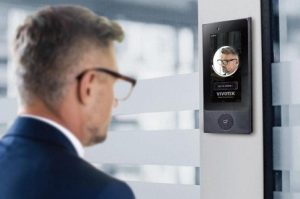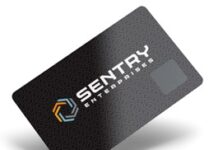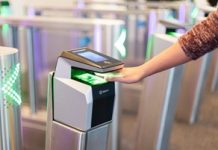
VIVOTEK, the IP surveillance solution provider, has announced the launch of its new Facial Recognition Tablet- FT9361-R. “The FT9361-R is a facial recognition tablet for access control and employee management,” explained David Liu, President of VIVOTEK USA, Inc.
“By simply presenting your face to the facial recognition tablet, true contactless and hands-free access control is achieved. The FT9361-R’s deep learning AI technology can precisely detect a real, living/breathing person from that of a high-definition photo. With a focus on high accuracy, high security, and group (list) management, the FT9361-R is especially effective for healthcare, data centers, laboratories, and other confidential industries and situations.”
Each FT9361-R face recognition Tablet can store up to 50,000 facial profiles, so operators do not need to worry about the insufficient capacity to cover all the people in and out. Through the facial database, administrators can categorize profiles into different groups, such as blacklist, VIP, staff, etc., and grant varied credentials to each group.
“FT9361-R integration with an access control system can detect facial profiles 30 – 150 cm in front of the tablet, and match the characteristics with profiles in the database,” Liu continued. “When mapping was checked, the access control system would command open or close of an entry point. Therefore, true hand-free access control can be achieved effortlessly.”
Facial images are captured and verified in real-time with biometric authentication. Furthermore, deep learning analytics can accurately verify a person’s identity even through makeup, beards, hats, glasses, or surgical masks, providing 99 percent accurate authentication for a safe and secure environment.
Facial recognition uses biometric credentials that cannot be transferred to others, thus greatly reducing the risk of fraudulent access or ‘buddy punching’ for employees clocking in. Going a step further, FT9361-R phases in dual accreditation functionality, integrating facial recognition and card reader altogether. Employees meeting both the verification of facial recognition and card reading can pass through, facilitating security to a higher level.












